Asymmetrical Rigid Flex Material Layups:
Asymmetrical rigid-flex board designs are surprisingly common despite the challenges associated with manufacturing these types of boards. They are very difficult to manufacture and may even be impossible to build in some circumstances.
Maintaining balance and symmetry is crucial with rigid-flex printed circuit boards (see IPC 2223 A.8.1), so avoiding asymmetrical designs altogether is best practice. Building out-of-balance rigid-flex circuit boards creates a higher potential for manufacturing issues and points of failure you don’t want to create when you don’t need to. The manufacturing panels and boards themselves will be prone to warp, making both manufacturing and assembly difficult.
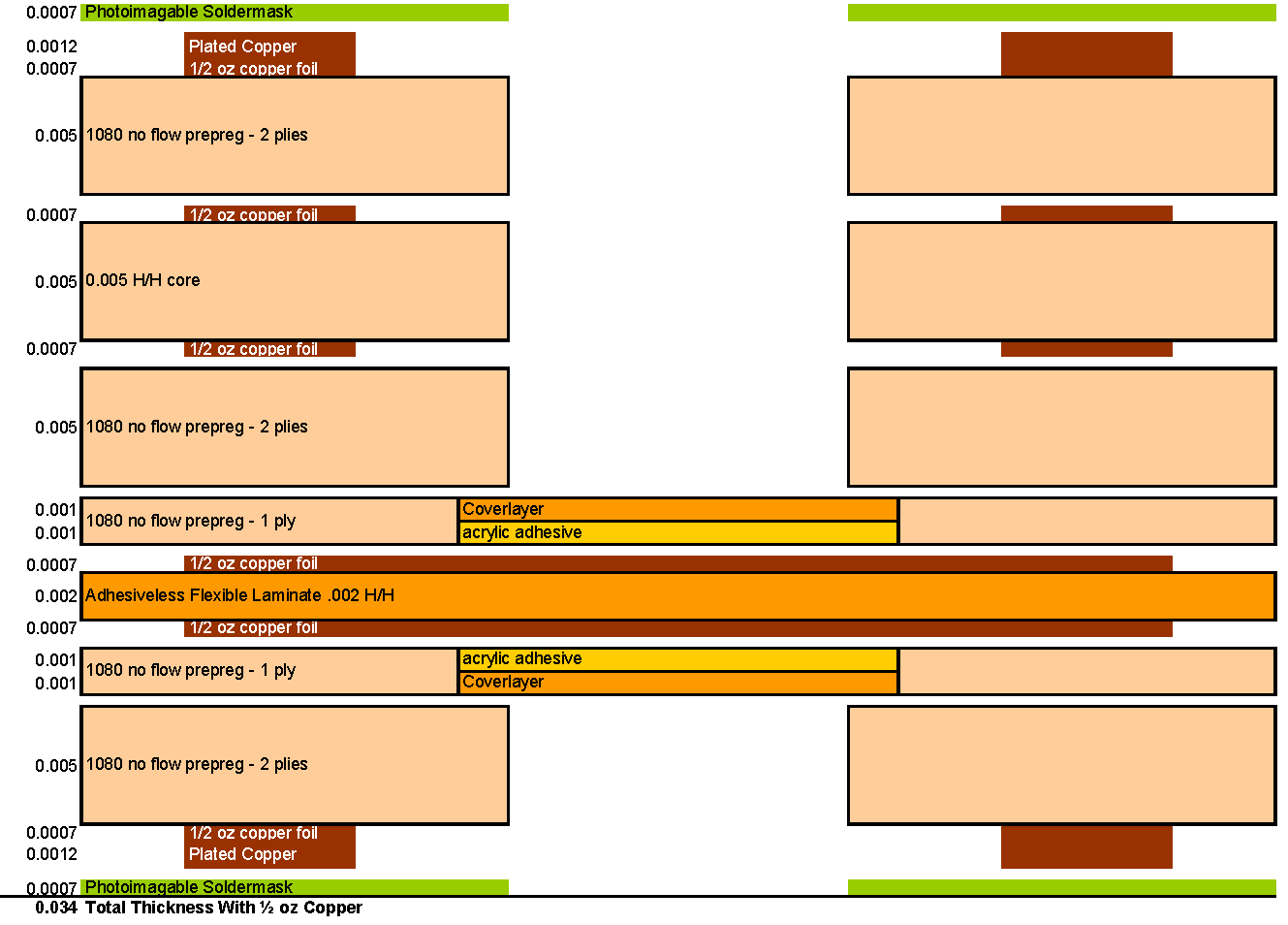
Common Examples of Asymmetrical Rigid Flex Circuit Boards
We commonly see two types of asymmetrical designs. The first is where the flex layers aren’t centered with the neutral axis. When manufacturing designs of this nature, the printed wiring boards are prone to warp due to dissimilar dimensional X/Y movement . This defect creates more issues down the road in the manufacturing process, such as accurate drilling or plating. Overall, you can expect to see sharply reduced yield compared to the material used. The best way to prevent these issues is not to design asymmetrical boards outright.
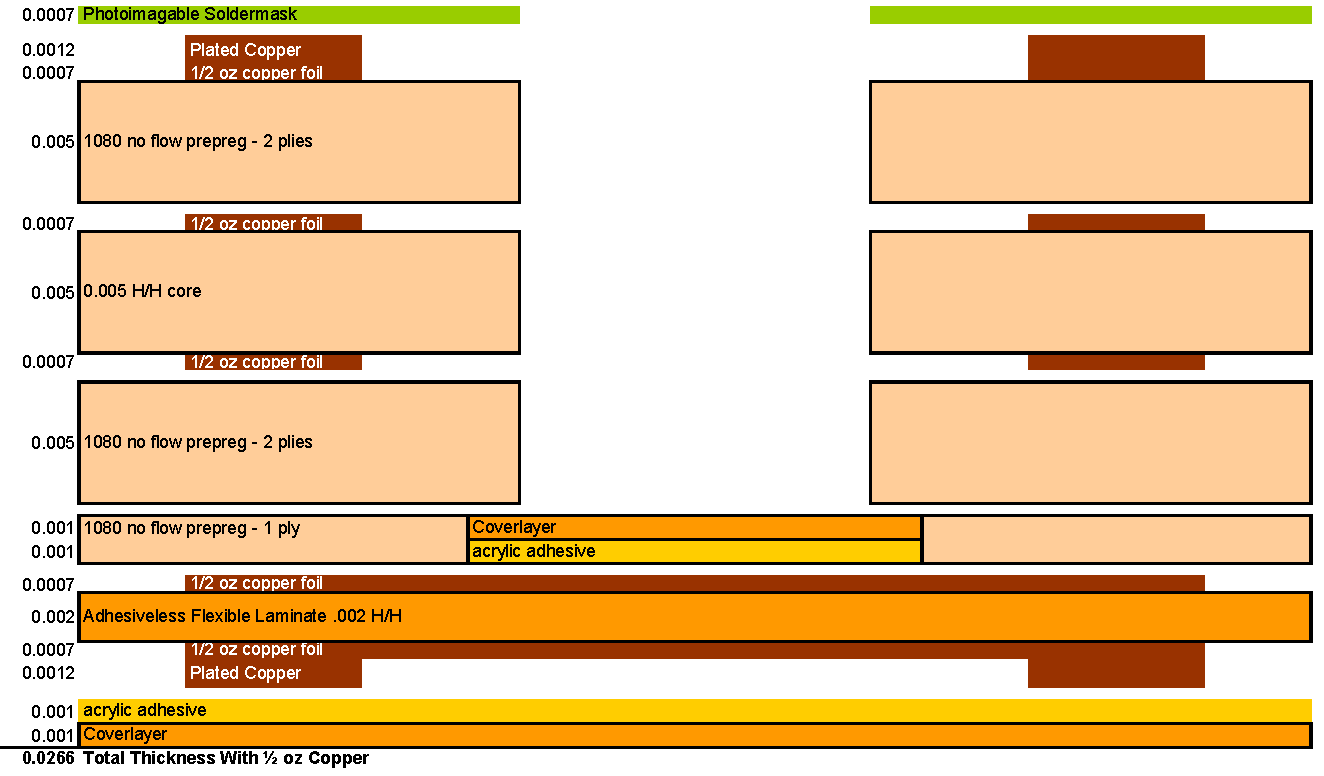
Depending on the severity of the issue, the design may be entirely non-manufacturable. Regardless, rigid-flex printed circuit boards with flexible outer layers will experience some level of yield loss, which can be as high as 50% or more.
As flex circuit board manufacturers, we understand the value added from accurate design with tolerable yields and manufacturing costs. Give us a call to request a quote or a design consultation: https://www.allflexinc.com/contact-us/
We can help you prevent design flaws from costing you during the manufacturing process and recommend alternative engineering solutions for your rigid-flex circuit boards.
Or, if you need a good starting place for your design, check out our Valu Builds Brochure. The Valu Builds Brochure has very stable, very high yielding, material layup suggestions for four layer up to 10 layer rigid flex designs. They were developed to provide you with the lowest possible cost layups at the highest potential manufacturing yields. You can get your copy here: Flex Circuit Design Guide | All Flex Solutions | Minnesota, USA (allflexinc.com)
Rigid Flex with Flex Layers on External Layers of PCB
A typical rigid-flex board design includes flexible portions that terminate into hardboards. However, some rarer circumstances lead to designs with flexible portions terminating in a flexible board instead. Some designs are this way to accommodate ZIF connectors and through-hole assemblies. We can manufacture around the design in cases like these, where a flex circuit must terminate at a flexible board. However, the extra time and process required reduces yield and increases manufacturing time, so it should only be used when necessary.
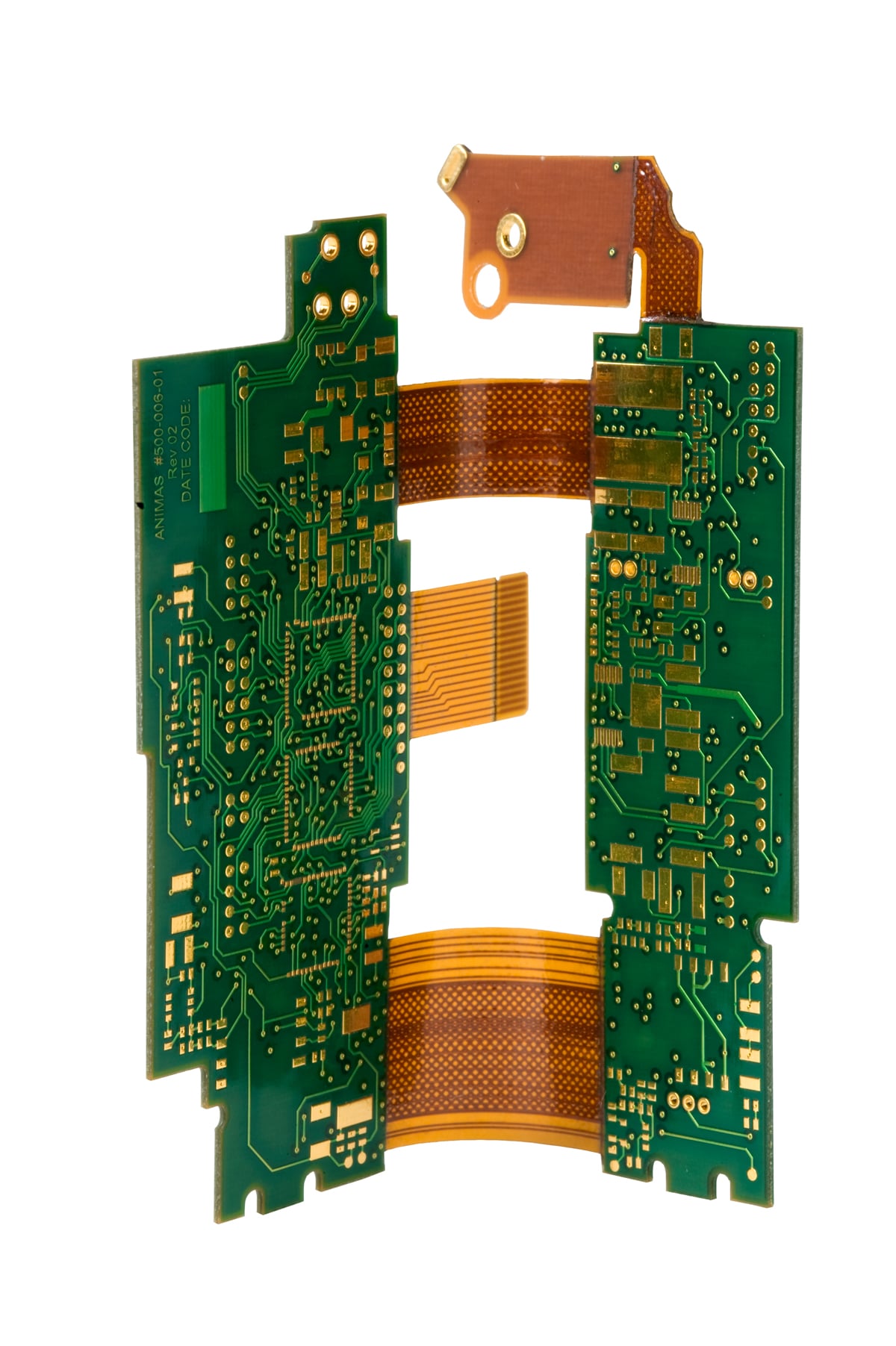
Understanding Rigid Flex Board with Flex Arm Manufacturing
Our traditional rigid-flex printed circuit boards (with all flex portions terminating into hardboard circuitry) have high yields and can be manufactured with few issues. When manufacturing flex arms terminating in flexible circuitry, extra steps must be taken to preserve the delicate, flexible arm.
Despite not being included in initial designs, flex arms that don’t terminate into rigid circuitry must be first manufactured with a rigid board in a process called “pouching.” Pouching protects the flexible circuits while the outer layers are processed. If we instead left the flexible portion exposed, the manufacturing process would attack the circuits and pads, causing failure and reduced yield of the internal flexible layer features.
The pouching process involves using extra layers of core material around any exposed flexible arms. The extra material isn’t removed until the entire manufacturing process is complete and just before electrical testing.
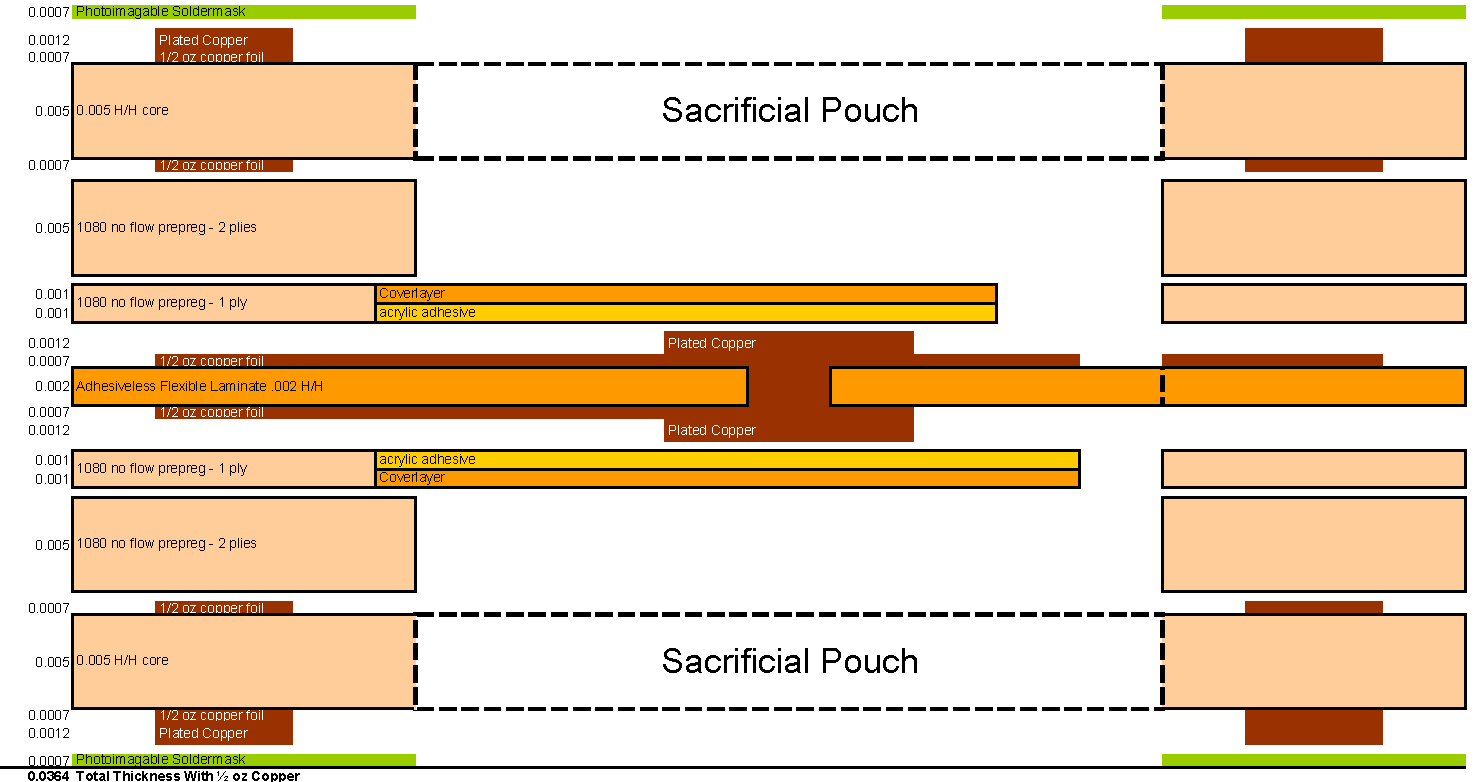
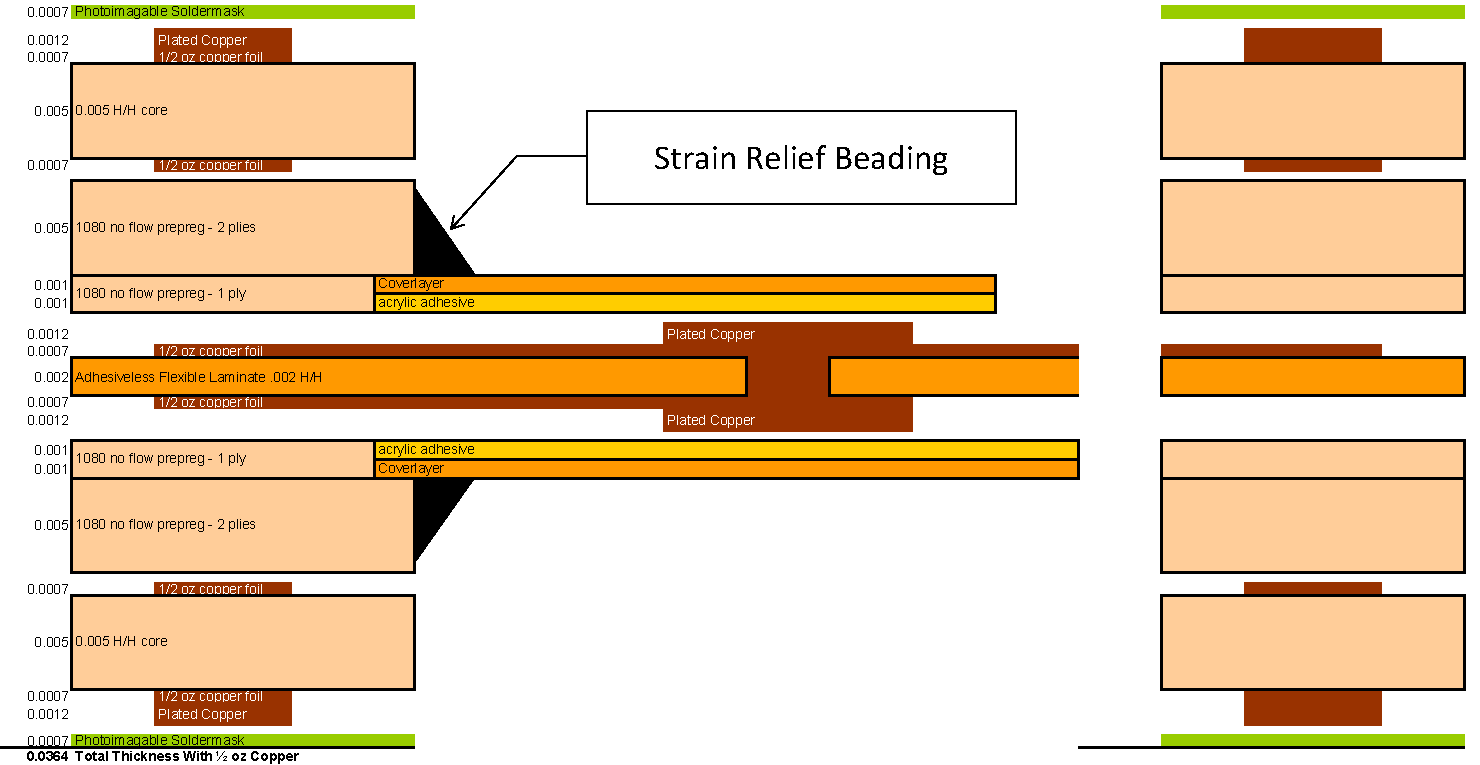
If you have design concerns surrounding flexible arms on rigid-flex printed circuit boards, don’t hesitate to contact us for a consultation regarding whether your design needs these considerations or if another solution may be available. Give us a call to request a quote or a design consultation: https://www.allflexinc.com/contact-us/
Be sure to stay tuned to our rigid-flex design blog, where we cover a wide range of helpful topics, such as rigid-flex design guidelines, information on flexible heater solutions, and a discussion of the additional pros and cons of rigid-flex designs.